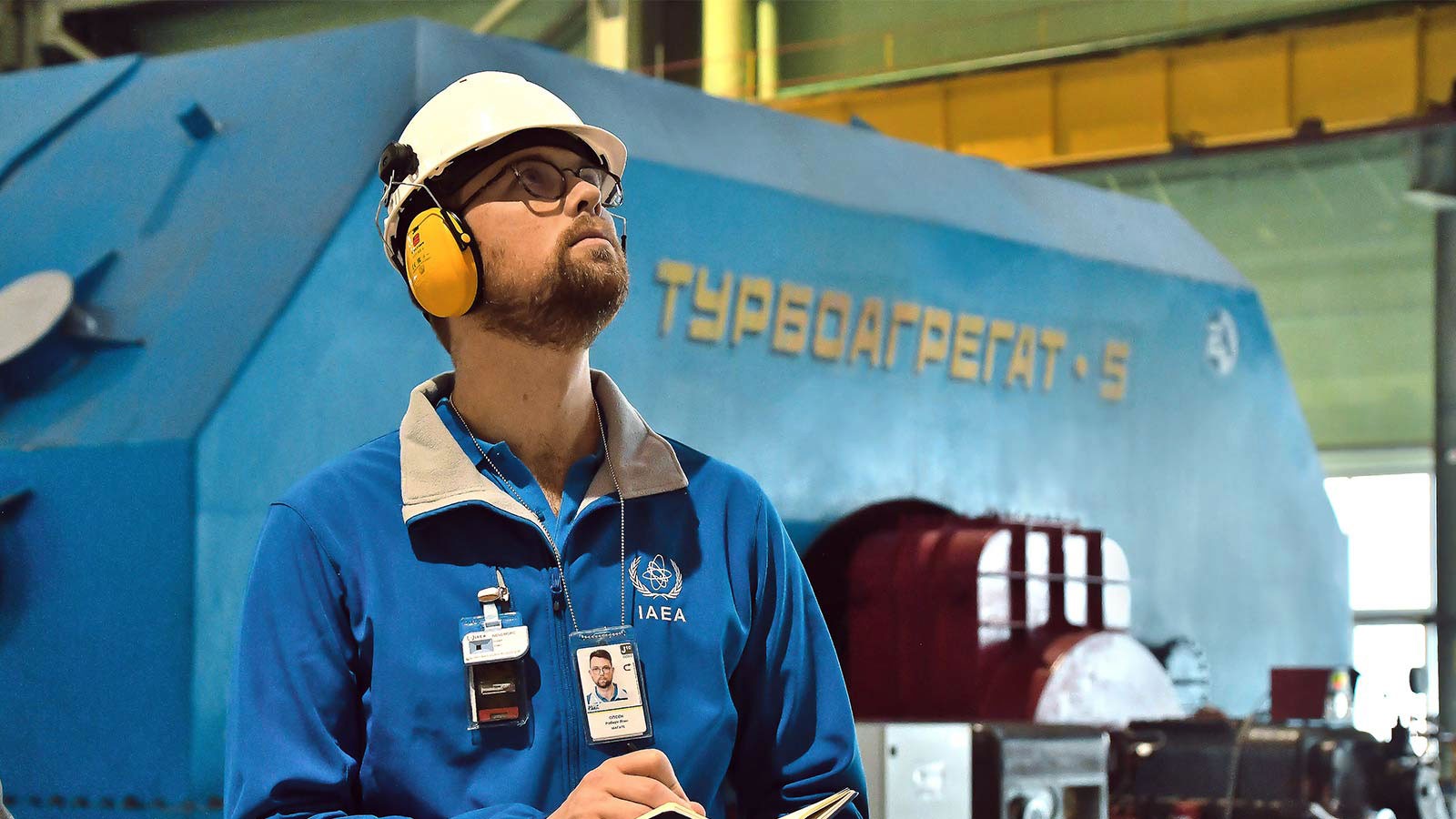Frontline Engineers: Safeguarding Nuclear Facilities in Ukraine
Some of Olsen's main responsibilities include the development of tools and technical guidance that assist border crossing officials detect and retrieve nuclear material that is out of regulatory control.
Robert Olsen always knew he wanted to work in nuclear engineering. He set himself down a path to make his way to the top, and today, he’s made it, working as a nuclear security officer for the International Atomic Energy Agency.
Olsen graduated from Utah State University in 2017 with a degree in environmental engineering. He invested his time in clubs and research that would help him attain his goal of one day working in nuclear engineering. This path led him to join the American Nuclear Society, which, thanks to Olsen’s cheerful and upbeat attitude, had its membership doubled over the course of one school year.
His dedication and eagerness to work in nuclear engineering landed him in the U.S. Navy, where he served as a teacher in Charleston, North Carolina. Soon after, Olsen was chosen to fill a first-of-its-kind position: nuclear emergency response officer.
Through his experience working for the Navy, Olsen was then able to get a job as a nuclear security officer, and that was his entry into the IAEA.
“Learning I got the job with the IAEA was a big deal,” Olsen said. “I was so excited to realize that everything I had done before led to this opportunity right here.”
Some of Olsen’s main responsibilities include the development of tools and technical guidance that assist border crossing officials detect and retrieve nuclear material that is out of regulatory control. Most recently, he was selected to observe the condition of Ukraine’s nuclear facilities during the ongoing war with Russia. In this role, Olsen was deployed to the Rivne Nuclear Power Plant as well as the infamous Chernobyl Nuclear Power Plant.
Americans were not originally allowed to visit Ukraine due to tensions with Russia, but Olsen was asked to come along because of his knowledge in the nuclear field and his fluency in the Russian language. The IAEA needed to expand their “Continuous Presence” initiative to ensure nuclear reactors throughout the country remained stable.
Although tensions may be high, a nuclear power plant must remain safe and secure during a war. One example of this took place at the onset of the war. Olsen spoke with personnel at a Ukrainian nuclear facility who had been working with technicians from Russia. When the war broke out, neither group could trust the other and the Russian technicians isolated themselves in a railcar with their supplies. As the fighting continued and the food in the railcar dwindled, Ukrainian employees at the plant delivered meals and water until they were able to arrange their safe passage to the nearest border.
In the next three to five years, Olsen expects to return to the United States with his wife and three children. He plans to continue working in the field of nuclear security.
“Your dream job might not exist yet, but you can make it happen,” Olsen said. “Even if there's not a program for what you’re interested in or specific to your career passion, that shouldn’t stop you from pursuing it. Find what you want to do and work toward making it happen.”
CONTACT
Matt Jensen
Public Relations and Marketing Director
College of Engineering
435-797-8170
matthew.jensen@usu.edu
TOPICS
Engineering 337stories Alumni 181stories Global 42storiesComments and questions regarding this article may be directed to the contact person listed on this page.







